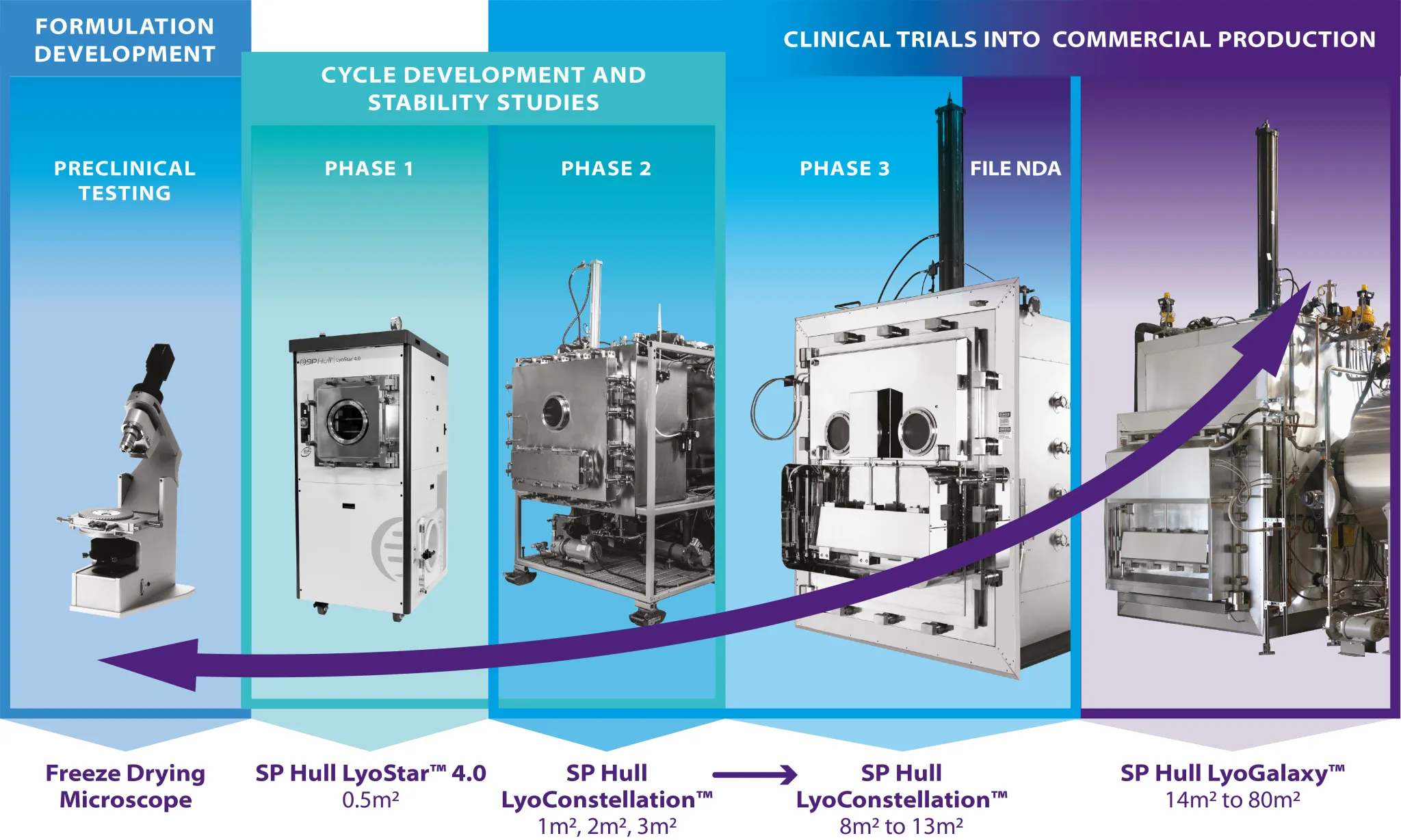The variation in ice nucleation temperature and the resulting effect on process and product quality has gained increasing attention; however, little is known about how the freezing protocol post ice nucleation can affect protein stability. A slow ramp rate after nucleation has potentially two opposing effects: slow freezing after ice nucleation allows ice crystals to remodel and grow to larger size, reducing the ice/freeze-concentrate interface where protein can adsorb and denature; on the other hand, a longer residence time in the freezeconcentrate above Tg’ may increase the reaction rate of bimolecular reactions such as protein aggregation. This work aims to investigate the effect of controlled ice nucleation on protein stability and batch uniformity from studying three model proteins, lactate dehydrogenase (LDH), intravenous immunoglobulin (IVIG), and recombinant human serum albumin (rHSA). Moreover, the freezing protocol post ice nucleation was varied to identify the critical factors. The thermal history, mobility, and the residence time in the freeze-concentrate together affect protein stability. Presented by Rui Fang, Department of Pharmaceutical Sciences, University of Connecticut
-
Products Pharmaceutical Processing Equipment Fill-Finish / Aseptic Processing Equipment Aseptic & Production-Scale Freeze Dryers Lyophilization Technology & PAT Tools
-
Applications
Find Products by Applications & Industries
- Brands
-
Learning Lab
Explore the Learning Lab
- Service & Support
-
About Us
Learn more about SP








